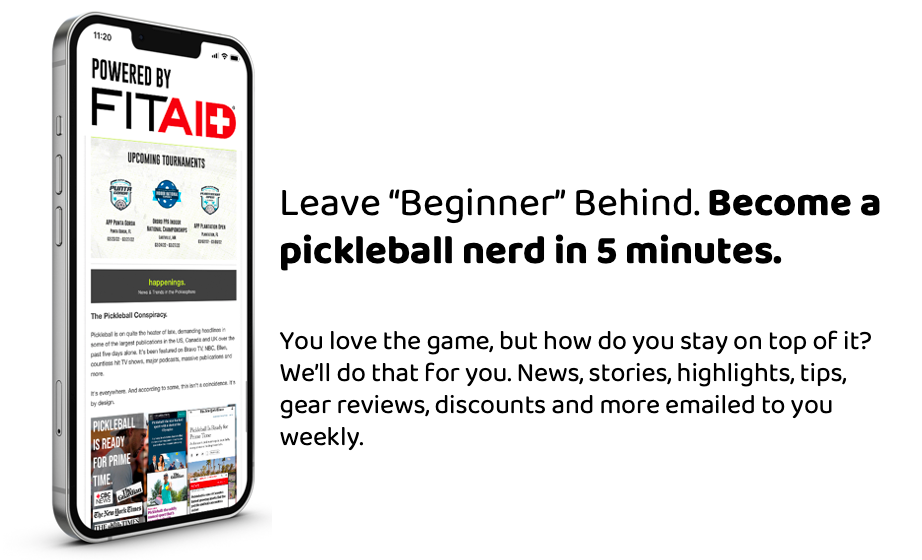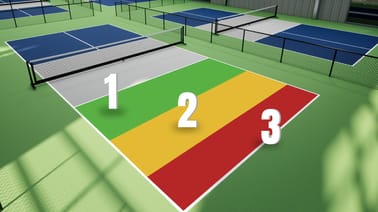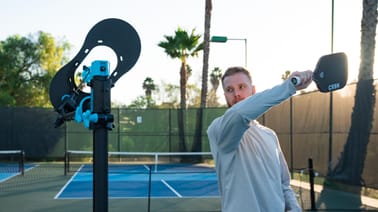
I Changed to a Continental Pickleball Grip and Instantly Got Better
Preamble
For those who aren’t familiar, a continental grip is also known as a hammer grip. The best way to learn a continental grip is to hold the paddle as if it is a hammer. You can even imagine a nail out in front of you and give it a few imaginary wacks.
A semi-western grip can be thought of as the fly-swatter grip. Imagine you are swatting a fly with your paddle - it’s the most common and instinctive beginner pickleball grip. Does that describe you? If it does, then you are in the right place. But even if you are using a different grip that is not considered continental, you will benefit from this blog. Trust me!
For a detailed breakdown of pickleball grips, watch this video.
How grip changed my game...
I come from a tennis background. Well, at least I grew up playing some summer tennis in elementary school.
The fundamentals of tennis transferred seamlessly into pickleball and provided me an almost immediate advantage. I’m confident this story is not unique to me.
SHOP THE LATEST PADDLES ON THE MARKET - THE RILEY AND LINDSEY NEWMAN SIGNATURE PADDLES FROM GAMMA, GET 10% OFF WITH 10DINK

As I started climbing the ranks and advancing from 3.0 to 4.0 and eventually 5.0, I realized a glaring weakness in my game: I could not handle drives at the net.
I was giving up points to shake n’ bakes like nobody’s business. Quick side note: do you know what a shake n’ bake is? If you don’t, click here.
Once an opponent had played a few games with me, they knew that if they just drove to my backhand while I stood at the NVZ, they were going to earn themselves a pop-up. And while my forehand volleys weren’t as significant of a liability, I did find myself sending a few easy ones into the net on occasion. To make matters worse, I couldn’t, for the life of me, figure out what was wrong.
After consulting with our local pro, Just Romero, I received my diagnosis: my semi-western grip. While my semi-western grip promoted a wicked forehand, and still does, it also promoted a tendency to angle my backhand volleys skyward. Conversely, it caused my paddle to be over-rotated on the forehand side and in the heat of the moment, angle balls downward, right at the net.
I like to think of myself as ‘coachable’, not someone who is too stubborn to heed the advice of a pro. Trusting that Justin was right, I switched from a semi-western grip to a continental grip.
RAPIDLY IMPROVE YOUR GAME OR YOUR MONEY BACK WITH PICKLEBALL MASTER COURSE! GET 10% WITH CODE THE DINK

Initially, it was unfamiliar and frankly, uncomfortable. But, I knew that if I stuck it out, my game might benefit. So, despite playing noticeably worse for a few days, I was committed.
Sure enough, my net game slowly improved. I stopped sending balls high into the air and down into the net. My volleys went from a liability to a strength. It really was that simple. While a semi-western is, for whatever reason, a more natural grip for most beginners, it is also often a major weakness. And most players don’t even realize it!
The icing on the cake was that I picked up two new and unexpected weapons. On the backhand side, I adopted a pretty lethal roll volley. Very similar to what you see from a Ben Johns (but like, the junior varsity version). On the forehand side, my dinks became much more consistent, and I could do more with them overall.
So, in short, if you’re having trouble handling drives at the net or if you haven’t tried a continental grip in general, now is your chance. Give it a try and see what happens. Worst case scenario, you can go back to whatever you were using before.











